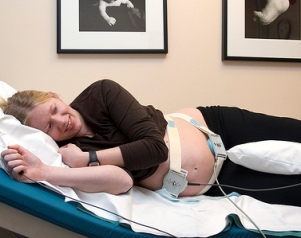As your estimated delivery date approaches, Braxton Hicks contractions occur more intensely and more frequently.
However, unlike true labor, false labor does not lead to significant or progressive dilation of the cervix and the contractions are not stronger, frequent and longer.
Here’s how to differentiate between true and false labor:
Signs of false labor:
- The contractions are irregular and unpredictable. For example, experiencing the contractions in intervals of 10, six, two, and eight minutes, etc.
- There is no progression over the time.

- You will feel contractions as a generalized abdominal tightening.
- There is no vaginal discharge.
- There is no rupturing of membranes.
- The change in position or cavity can cause contractions to slow down or stop.
Differentiating true labor from false labor:
Frequency of occurrence of each contraction: Make a record of each contraction by using a watch and make a note of when each contraction begins. If you are in true labor, you will experience the contractions in regular intervals and they develop closer together. If it is false labor, then contractions are irregular.
Duration of each contraction: Make a note of when each contraction begins and when it ends. Normally, true contractions exist more than half a minute at the beginning and they become longer for up to one minute. The contractions of false labor greatly differ in duration and intensity.
Contractions during activity: True labor contractions persist despite any activity and they become even more powerful with increased movement like walking. False labor contractions stop regardless of any activity.
Area of contractions: The pains of true labor usually start strongly in your abdomen, spreading throughout the belly and lower back. Contractions in false labor are usually restricted to the lower abdomen and groin region.
However, there are exceptions to the rule. Some pregnant women experience painful contractions without experiencing any cervical changes, while others only feel a little pressure and backache.






